fluidontheknee
New member
Morning All
Anybody here have any experience of squatting after getting "fluid on the knee"?
Since the medical diagnosis, Ive done a months rehab, wobble board exercises, leg ext. Was told the knee didnt need to be drained, that the situation needed to be "managed/tolerated"
Since doing the rehab, the stiffness and soreness is much less than before.
It still causes discomfort after driving, sitting down and esp after getting out of bed in the morning
When walking etc its generally fine and gets better more I walk
Am intending to squat in next day or so in order to strengthen the legs, get some muscle tone back etc etc , but was wondering anybody here have the same experiences?
Anyone have any tips/advice/thoughts to pass on .
Obviously intent to start back slowly but just a bit nervous. Forwwarned is forearmed !
Thanks
Anybody here have any experience of squatting after getting "fluid on the knee"?
Since the medical diagnosis, Ive done a months rehab, wobble board exercises, leg ext. Was told the knee didnt need to be drained, that the situation needed to be "managed/tolerated"
Since doing the rehab, the stiffness and soreness is much less than before.
It still causes discomfort after driving, sitting down and esp after getting out of bed in the morning
When walking etc its generally fine and gets better more I walk
Am intending to squat in next day or so in order to strengthen the legs, get some muscle tone back etc etc , but was wondering anybody here have the same experiences?
Anyone have any tips/advice/thoughts to pass on .
Obviously intent to start back slowly but just a bit nervous. Forwwarned is forearmed !
Thanks


 Please Scroll Down to See Forums Below
Please Scroll Down to See Forums Below 










